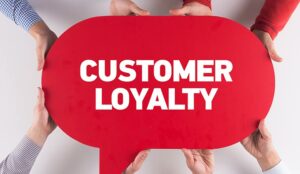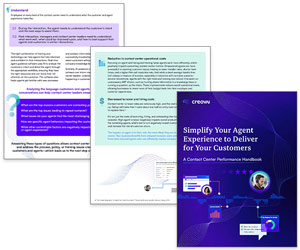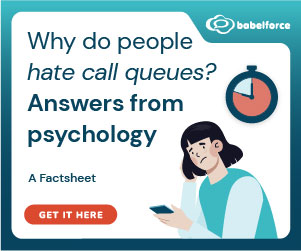The most popular view is that the more loyal a customer is, the better. But is this really true?
Richard Snow investigates.
For me, the real question is “how do you measure customer loyalty?”, quickly followed by “how do you measure the value of a loyal customer?”
Loyalty does not equate to value
Let me give you a personal example. I have been with my bank for 30+ years, so by any definition I would probably be thought of as a loyal customer. I have two current accounts and two savings accounts. Money goes into the current accounts at month end and is mostly spent by the end of the first week of the next month. The two savings accounts have small balances in them to cover short-term emergencies. My long-term savings are elsewhere, my insurances are elsewhere – I have nothing else with them and they don’t charge me anything. On this basis, I reckon my “worth” to the bank is almost zero. So quid pro quo, loyalty doesn’t equate to value.
This is reflected in my research into customer data management. This shows that companies have a real problem managing their customer data. Basically, the research showed that companies have customer data in anything up to 20 (or more) systems (billing, CRM, ERP, data warehouse, spreadsheets, etc.), making it almost impossible to get a full picture of any one customer. So how does a company measure even the longevity of a customer, let alone their loyalty or worth?
Some would say the answer lies in a new metric: net promoter scores. If I go back to my banking example, I have nothing bad to say about my bank and when asked have no issue extolling its virtues to anyone. On that basis, I guess they would give me a high net promoter score.
But I have already said my “worth” to them is almost zero, so how is this adding to its view of me as a loyal customer? Maybe some of the people I spoke with did join them as a customer but they will have disappeared into the morass of customer data and it is unlikely they can be linked back to me, which all points to the fact that unless companies get a handle on their customer data, any metrics are going to be open to question.
So I want to get back to “customer value”, or worth.
Customer satisfaction
The starting point for me is customer satisfaction. My research into customer experience management and customer analytics shows that most executives rate customer satisfaction as their number-one driver. Again the logic appears simple: the higher the customer satisfaction, the more loyal the customer, the higher their worth.
But again measuring customer satisfaction is often an art rather than a science. Companies use all manner of ways of scoring customer satisfaction – agents rate customer satisfaction on a sliding scale as they finish a call, companies send out surveys or direct customers to web-based surveys, or worst of all they direct them to an IVR-based survey. Companies can also get third parties to call customers up and ask them, or use text and speech analytics to score customer satisfaction by analysing the content and sentiment expressed in letters, emails, text messages or call recordings. Done properly, I think these methods deliver the most objective and repeatable results.
The challenge is then to link customer satisfaction to value. This is by no means easy, and the issue comes back to customer data.
Fewer than 20 per cent of companies can produce the life-time value of customers
My research into customer analytics shows that fewer than 20 per cent of companies can produce the life-time value of customers, let alone by segment or individual. Life-time value requires companies to aggregate the cost of marketing, sales, and customer service, the cost of interacting with the customer across all communication channels – both inbound and outbound, the value of products and services sold, indirect (or hidden) costs or income brought about because of the customer’s actions – referrals, loss of brand value (or in extreme cases, loss of share value) because of social media actions, customer retention activities, etc.
All this data sits in a multitude of systems, owned by different lines of business, in different formats, and the simple fact is that most companies just can’t bring it all together and produce the metrics they require.
So how do companies drive real customer loyalty and long-term value?
Once upon a time, the answer was thought to be customer relationship management (CRM). The problem as I see it is that CRM is very inward looking and focuses on supporting internal marketing, sales and customer service processes – how to create and run a marketing campaign, who should be phoned next to follow up on a sales opportunity, which services cases are still open, etc.
Relationships are built on communication
So for me the answer is customer experience management (CEM), which comes partly as a result of a lecture I once heard from a psychologist who pointed out that relationships are built on communication. If individuals communicate a lot then you have a relationship. How well or badly you communicate will determine the state of the relationship, and if you don’t communicate then do you really have a relationship?
In a business sense this means that companies need to drive customer loyalty and value by communicating with customers.
There are two important points to remember. One, this cannot be done at any cost because if it costs more to handle customer interactions than the customer’s value then ultimately, applied across the entire customer base, it will mean the company goes bust.
Two, interactions need to be handled in context and the customer needs to have a consistent experience (and information) across all touch points, otherwise the customer won’t get positive experiences and companies run the risk of them defecting to the competition.
A company’s customer experience strategy needs to be built around these principles and deliver positive experiences whilst taking into account the business strategy for the individual, or at the very least the customer segment they belong to.
This brings me back to the thorny point of customer data and metrics. I often hear executives say “80 per cent of my profit comes from 20 per cent of my customers”, but, as I have said, how many really know what 20 percent and how much profit? I suggest not very many.

Richard Snow
Customer loyalty is not just about identifying which customers have been customers for the longest. It needs to be associated with customer value, and companies need a plan to drive up customer loyalty through better communications and introduce metrics that really show how they are doing, based on better, more complete customer data.
Richard J Snow is VP and Research Director, Ventana Research (www.ventanaresearch.com)
Author: Jo Robinson
Published On: 12th Jan 2011 - Last modified: 1st Sep 2025
Read more about - Customer Service Strategy, Customer Experience (CX), Customer Loyalty, Customer Service, Empathy, Rapport, Richard J Snow, Service Strategy











































